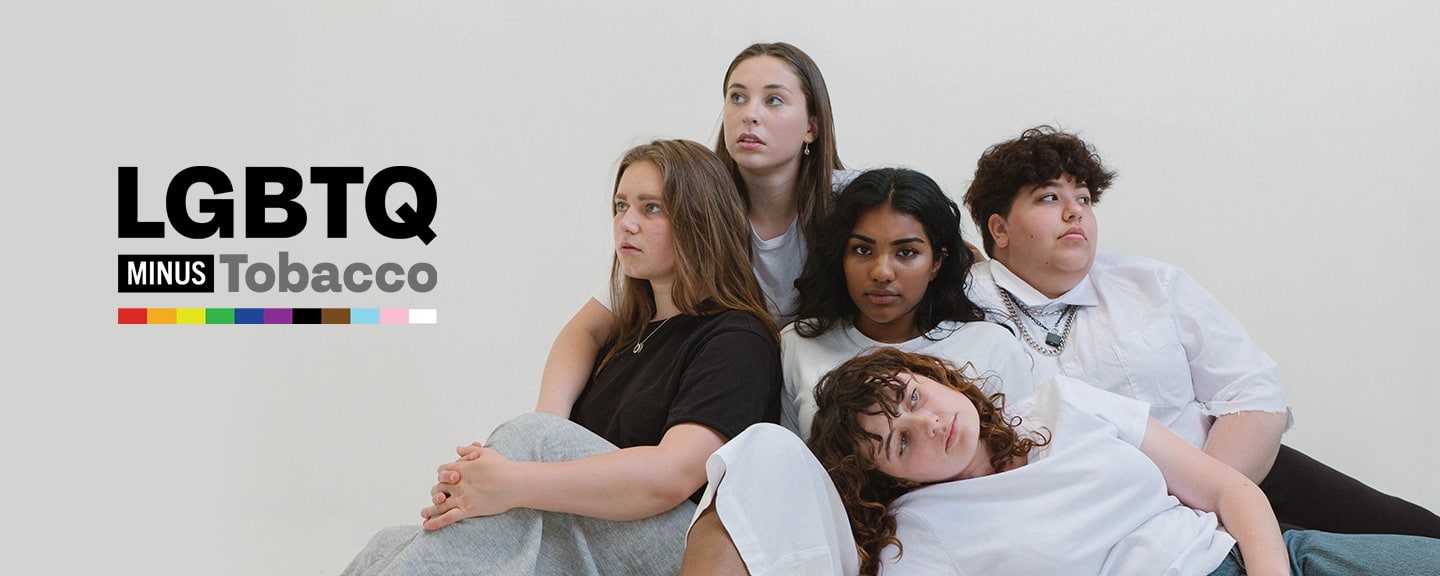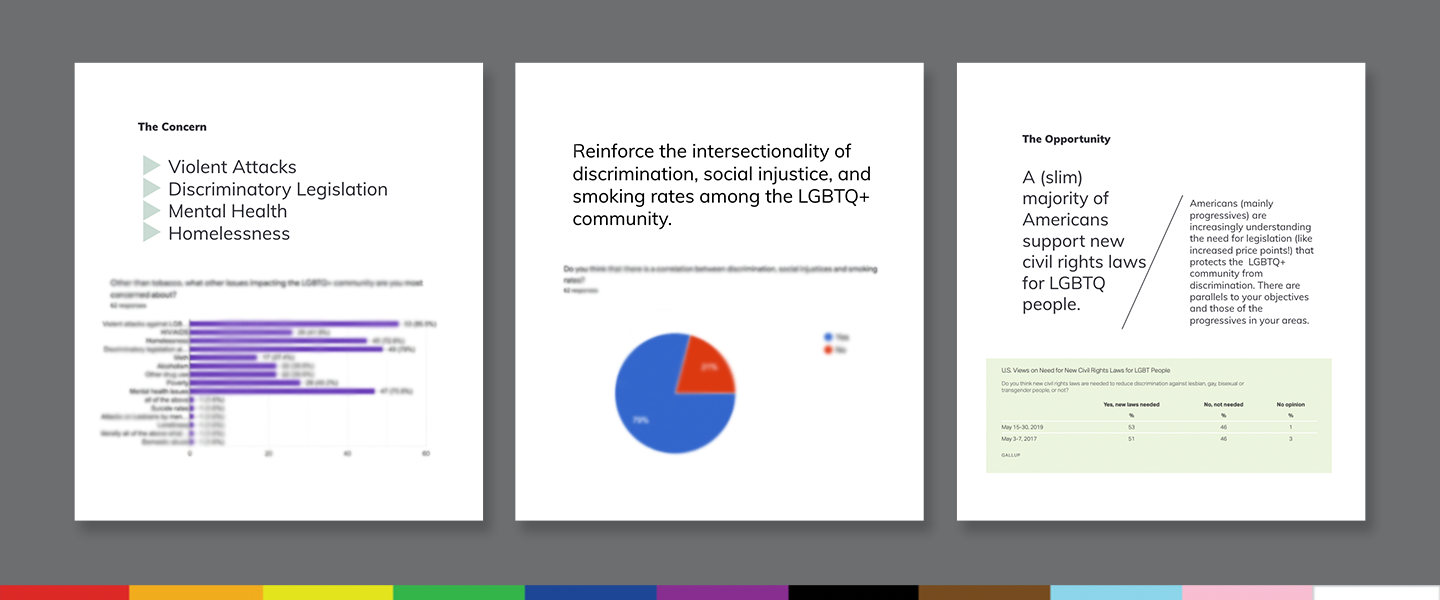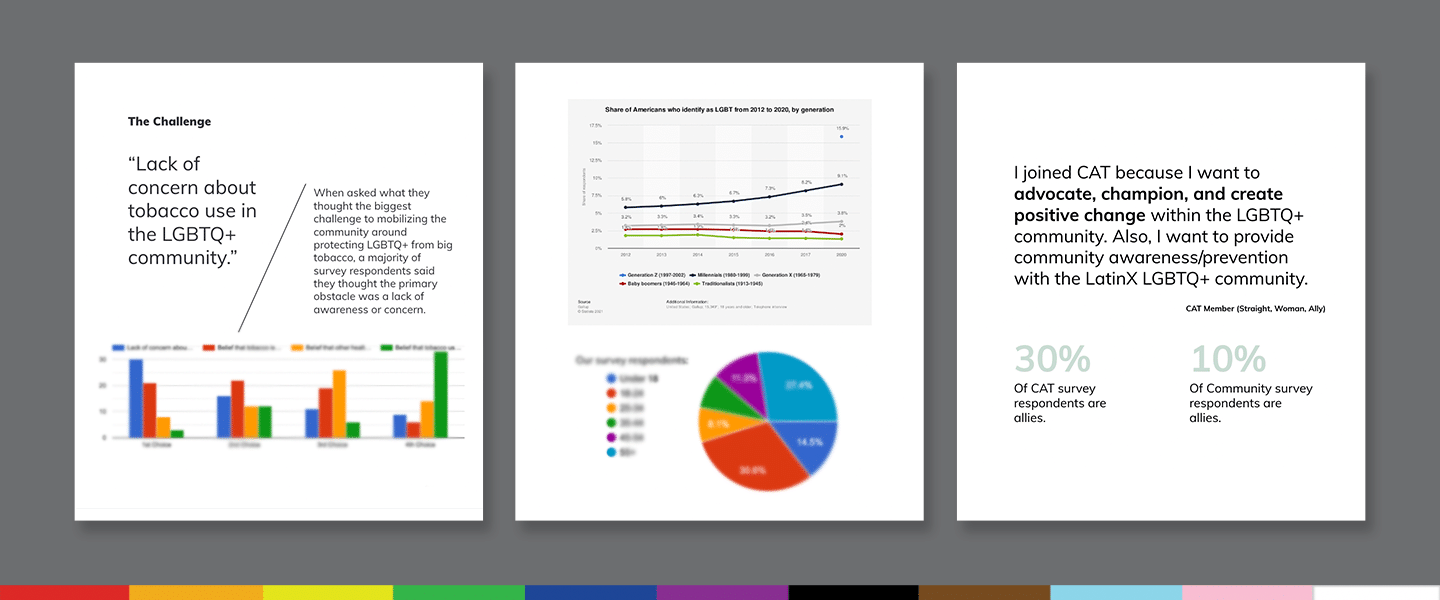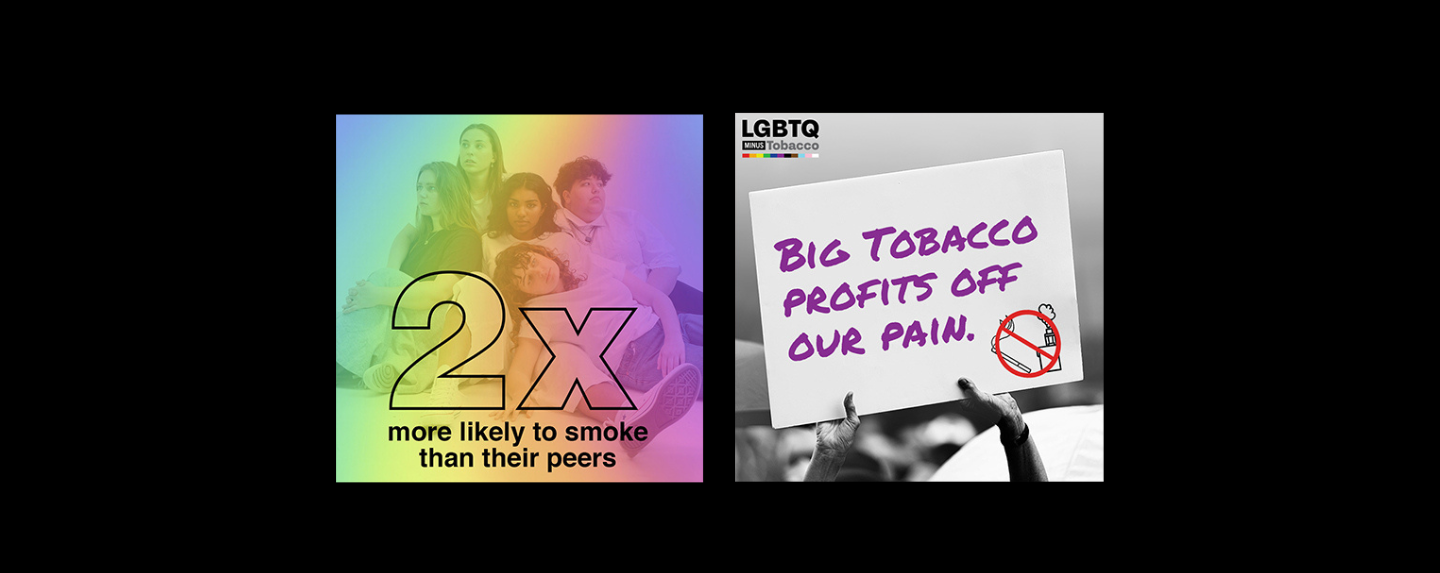
Overview
The tobacco industry actively targets members of the LGBTQ+ community and other diverse young people to profit from their moments of vulnerability and pain. LGBTQ Minus Tobacco organizes LGBTQ+ and allied community members in the Bay Area to raise awareness about this harmful practice, prevent tobacco addiction, and reduce secondhand smoke exposure.
Media Cause partnered with LGBTQ Minus Tobacco to build a foundation for a more strategic approach to their marketing efforts, ensuring a direct link between their marketing and advocacy efforts.
The tobacco industry targets LGBTQ+ young people and other marginalized communities through strategic advertising and other methods to increase tobacco use rates. These strategies are manipulative and especially effective among vulnerable youth.
LGBTQ Minus Tobacco seeks to combat this through education, advocacy, and community organizing. They came to Media Cause to get help in developing a strategic marketing plan, as well as creative content, to expand the impact of their work and educate and equip others along the way. It was important to position their message in a way that would meet and resonate with young, diverse audiences.

Our main challenge was to bring in the best practices LGBTQ Minus Tobacco had from an organizing and advocacy front, and integrate them into a strategic marketing plan. We needed to build the bridge between their objectives and their brand language, and bring it into the digital space to drive awareness to their cause.
We started with a small but mighty discovery. The key finding? Tobacco companies target LGBTQ+ youth because they are more vulnerable and easy to prey on—but most young people aren’t aware of this.
Next, we needed to develop a messaging framework with this thought in mind: How do we bring awareness to a big issue (combatting big tobacco) from a different angle? We needed to show youth how they were being targeted—negatively— because big tobacco profits from their moments of insecurity and pain.
Just telling young people to stop using tobacco products wouldn’t work, so we came up with a more engaging idea: using a common enemy to draw attention to the injustice of the situation. We wanted to convey the risks of tobacco and highlight how tobacco companies are preying on their vulnerabilities to target them.
Our final deliverable was a roadmap + marketing strategy with a brand opportunity analysis, messaging framework, channel + content strategy, and roadmap for the next 12 months.
To wrap up the strategic marketing work, we developed a series of creative assets, and helped them run a paid media test, to show how they could actively bring the plan to life.

One of the most effective tools in the discovery process was a focus finder exercise (a technique we use to get alignment and understanding quickly in a small amount of time) at the beginning of the project. This helped set the foundation for defining success, learning more about their intended audiences, and gathering their team’s knowledge of the issue space.
We interviewed their team, surveyed their community advisory team, and conducted a Facebook survey to gather more data.
These findings helped guide us to the root of the issue and how we could impact those being targeted.
Messaging was at the heart of the strategy for this project. We needed to distill what they were saying in a way that made sense to others. Uncovering the intersectionality of issues affecting their audience was a major help.
One of the most important things to think about in a project like this is how competitive it is to talk to young people of diverse backgrounds. We had to find messaging that would be both relevant and interesting. We needed to find a way in to talk to people about the issues affecting them most—even though they may not even be aware of them.
Though difficult, we landed on the narrative of unmasking a common enemy: tobacco companies.

Our strategy for the creative was to test different formats to see what performed best with our target audience. We tried three different approaches: a human-centric/people-focused approach, a more ‘Gen Z’ approach with gradients and stats, and an illustration and advocacy-focused approach.
The ads featuring the big stat (queer youth are 2x more likely to smoke than their peers) performed better than ads featuring people as the main design element.
We ran one test campaign for which we developed both the creative and paid media assets. We ran the ads on two channels: display/programmatic and Meta.
We tested 2-3 different messages and approaches to help LGBTQ Minus Tobacco understand what happens when they lead with different approaches, better informing their future campaigns.
One of the biggest challenges we faced when implementing this was that the ads were often flagged as promoting tobacco—even though they were intended to do the exact opposite. We worked with Meta support to promptly reverse the flagging and ensure that they will not be flagged in the future.
Overall, the awareness and lead generation campaigns returned different results. On the awareness front, combative language (“it’s time to fight back”) performed better. On the lead generation front, the emotional language performed better than ads that were using more practical language. 90% of leads came from the ads that were using “Join the movement” as the main CTA and were more descriptive.